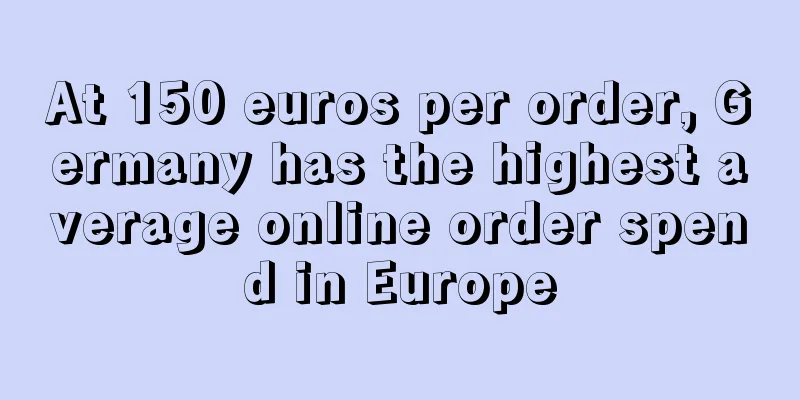At 150 euros per order, Germany has the highest average online order spend in Europe

|
Recently, a report released by Sendcloud and Nielsen is worth noting. The report surveyed nearly 8,000 online consumers and revealed the thoughts of online consumers in major Western European countries such as Germany.
The study shows that fashion accessories and electronics are the two most popular categories for online shopping in Germany, followed by home and garden. Food and beverage is also a fast-growing category, especially among German millennials. This is mainly driven by the rise of food, grocery and delivery services in response to the COVID-19 pandemic.
It is important to note that Germans spend the most per online order in Europe. On average, Germans spend €152.1 per order, which is 38% higher than the European average order value of €110.3.
In terms of “where” they shop , German shoppers show a clear preference for buying from German companies. In fact, when it comes to cross-border e-commerce, Germans are the least likely of all European shoppers to buy online from abroad by 2021 (less than a third of German shoppers do so). This means that cross-border trade in Germany is well below the European average of 45%.
The main reason for disliking cross-border purchases is the high shipping costs and customs inspection procedures that result in long waiting times or high /opaque costs, which creates a negative experience.
Indeed, high shipping costs are a common driver of cart abandonment. In 2021, 68% of European shoppers will abandon their cart if they encounter high shipping charges at checkout, and 40% are unwilling to pay shipping at all if the order value is over €150.
This is particularly important for Germany, as its average order value is high (over €150 on average, with German millennials spending an average of €233.1).
In 2021, 93% of German online shoppers said they shopped on online marketplaces such as Amazon Germany, which are generally more likely to offer free shipping than other online retailers.
To do this, sellers can offer reasonable shipping rates, avoid charging high shipping costs, and always communicate shipping costs transparently. Try listing shipping costs on the product page or providing a link to shipping information in the footer of your independent website before the checkout process begins. Germany E-commerce |
<<: Shopify launches Linkpop to help social commerce grow
>>: US e-commerce demand for multiple categories will grow in 2022
Recommend
The "new factory managers" on AliExpress are doing a fierce business, and some have prepared 100,000 pieces of goods for Double 11
With the overseas Double 11 approaching, AliExpre...
What is Crossing Media? Crossing Media Review, Features
Crossing Media was founded in Los Angeles, USA. W...
What is Yuyi Translation? Yuyi Translation Review, Features
Yuyi is an Internet translation platform built by...
A post-85s generation started a cross-border business in Guangzhou and became the first in multiple categories on multiple platforms
In the childhood memories of the 80s and 90s, the...
Malaysia's real-time payment transactions exceeded 68 million in 2020
The latest global report from ACI Worldwide (ACI)...
Four major online shopping trends in Southeast Asia during the epidemic
E-commerce is one of the few sectors that has gro...
What is China South City? China South City Review, Features
China South City Group is a comprehensive trade an...
Half-year revenue of 3.519 billion! There are 868 best-selling Amazon stores
Half-year revenue of 3.519 billion! There are 868...
What is Dopigo? Dopigo Review, Features
<span data-docs-delta="[[20,{"gallery"...
Cross-border transactions will reach $156 trillion in 2022! Free shipping is awesome...
The increase in the penetration rate of smartphon...
Eastern European countries have the fastest growing e-commerce market, with about 70% of people keen on online shopping
Data from the 2020 European E-commerce Regional R...
Online shopping platform Anymarket arrives in Argentina
Anymarket, an online shopping platform under the ...
What is succulents-australia-sales? succulents-australia-sales Review, Features
succulents-australia-sales is a wholesale and reta...
Driven by the epidemic, demand for skin care products in North America has increased
According to a survey of more than 10,000 users i...









